#pathfinder adventures
Explore tagged Tumblr posts
Text

Pathfinder Adventures: Shadows at Sundown - Chapter 1 by Gislaine Avila
8 notes
·
View notes
Text
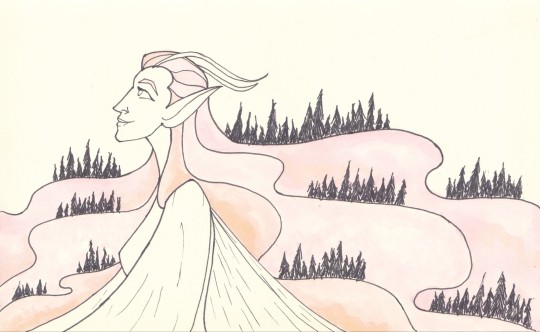
I'm a little dungeon master, and for almost a year now my players and I have been exploring Darkmoon Vale. Well, more Crown of the Kobold King content! Syntira, Eternal Queen of Darkmoon Vale, my dear nymph queen. I love her (and her sister) so much, so I drew she as part of Inktober.
I'm so sad that Paizo didn't develop the Eternal Monarchs. And fairies weren't even mentioned in the Crown remaster, nor were some other NPCs that I dearly love...
So I ended up writing my own Darkmoon, using as a basis all the adventures in Falcon Hollow that Paizo published. Will I tell more about this? Who knows...
#pathfinder#pathfinder 2e#Crown of the Kobold King#Darkmoon vale#Fey#Syntira#Pathfinder adventures#A little bit of owls#Its our party teg hehe#Notes on the Darkmoon#Its too#Falcon's Hollow
7 notes
·
View notes
Text
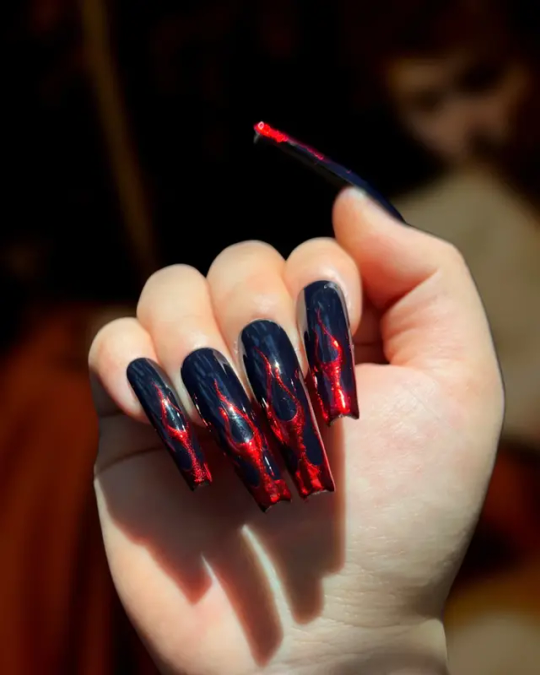
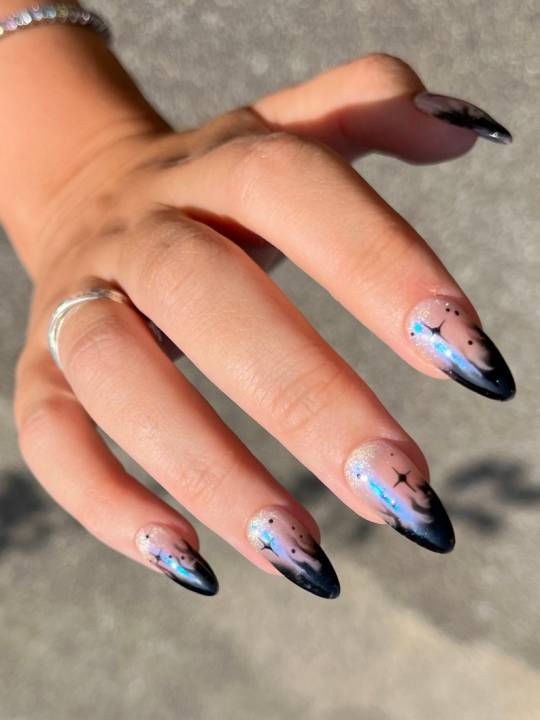
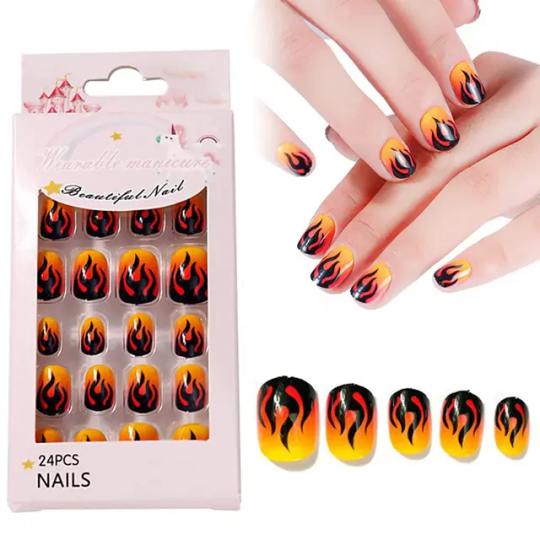

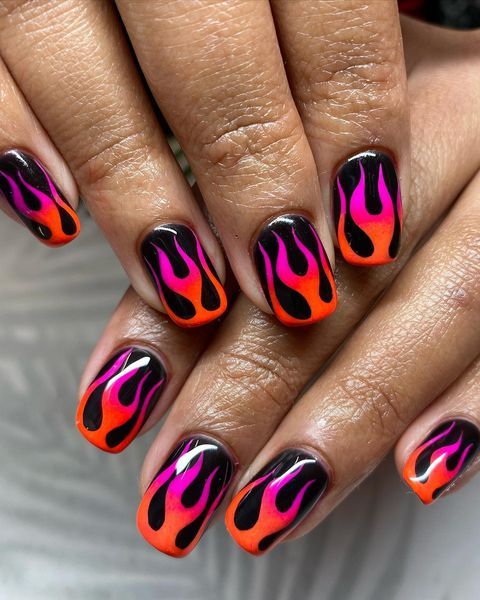
breachill bitches got their nails done in this session of pathfinder
1 note
·
View note
Text
How do we feel about pathfinder, because I finally started playing wrath of the righteous after having it sitting in my library for ages. I spent hours in it before even making it out of the character creator, and finally I got overwhelmed and just made marigold as a halfling alchemist
0 notes
Text
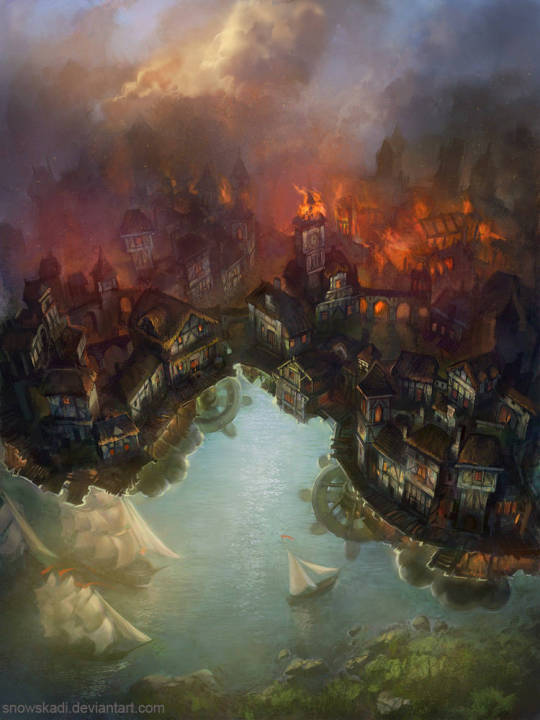
Adventure Arc: Toppling the Toymaker
Artsource
Labour disputes in a lumber town lead an avaricious sawmill owner into a head on conflict with a grove of dryads
A dead man dressed like the king of a past era points the party to investigate a derelict playhouse staffed by puppets and hungry spirits.
Hoping only to save people from the horrors of war, a well meaning artificer builds a clockwork army that's poised to go rogue upon it's debut
Buffeted by an unnatural fog, the denizens of a flying city throw an inventors' fair to keep everyone's spirits up.
Unlike a lot of my arc sized adventures which tend to progress in a strictly linear fashion, I decided to try my hand at creating something more nebulous for a more open world style of campaign.
You could start these adventures in any order, and whether your party is your classic bunch of wandering dogooders guarding a caravan, a gaggle of thieves in the province's capital looking to loot a creepy building, or a group of crime solving sleuths,there's a way to get them tangled in this disastrous chain of events.
Endgame: Once the machines start going rogue, it'll be all too easy for the party and their allies to throw blame at the toymaker, imagine this is all part of some plan to conquer the territory while he sits safely in his flying town. To put an end to things, they'll need to improvise a means of returning to Thopperton, possibly having tfight past the legions of clockwork soldiers in the process. Once there, they'll find Gleebringer sealed inside his laboritory by his own creations, possessed by the dryads who cursed him and his industry.
#adventure arc#campaign arc#artifice#gnome#fey#mid level#disaster#warfare#d&d#dungeons and dragons adventure#dungeons & dragons#pathfinder#daggerheart
146 notes
·
View notes
Text
my wife’s game, stewpot, is finally crowdfunding today!!
it’s an incredible game about adventurers settling down and starting a tavern. if you have been enjoying dungeon meshi this is a game for you!
#indie ttrpgs#stewpot#fantasy tavern#adventurers#dungeon meshi#fantasy#tabletop games#my wife#dragons dogma 2#dungeons and dragons#pathfinder
481 notes
·
View notes
Text
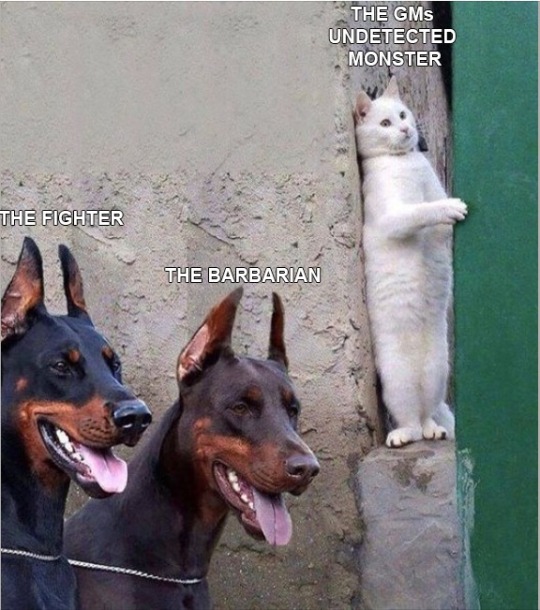
When those PCs have low perception scores...
#dungeons & dragons#dungeons and dragons#dnd#dnd 5e#d&d 5e#pathfinder#pathfinder 2e#pf#pf2e#ttrpg#low perception#tabletop roleplaying games#fantastic tales of adventure#dnd memes#pathfinder memes#cats#dogs#memes#meme#funny#lol#comedy#gamers#gaming
304 notes
·
View notes
Text
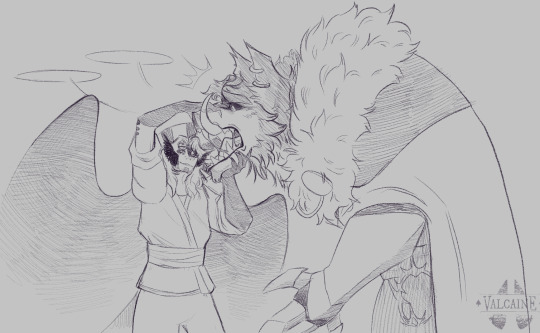
tmw when the weird bird dude that tried to kill you like, a bit ago starts geeking about piglin research and how little there is of it and you are just terrified of being strangled by talons again
#I’d imagine this being their first meeting lmao#Phil had a bounty on him for some reason and just went ‘yo you’re pretty chill’#and they ended up committing so many crimes together#so this would probably be like#hundreds or thousands of years before#hence the different designs#technoblade#philza#philza minecraft#technoblade fanart#technofanart#philza fanart#philza minecraft fanart#emeraldduo#emerald duo#emerald duo fanart#dream smp#smp earth#mcyt fanart#storyline inspired by ‘The Next Great Adventure’ by Pathfinder on Ao3 btw!!! read it rn#I wanna doodle more emeraldduo and their adventures hehehehehoheo#art#digital art#digital painting#digital sketch#sketches#good lord there are so many tags in this one help#and yes i like drawing teeth what about it#art more like fart
1K notes
·
View notes
Text
You sell items to adventurers for a living. It's relatively easy to get business in a frontier city like the one you live in. You were planning on becoming an adventurer yourself but an injured leg when you were young prevented that. But because you already know how to find items, and how they should be fairly priced, so it's a good living.
Not everyone who thinks of themselves as adventurers actually are adventurers. You sometimes have to sell weapons to naive groups of kids, who have no idea what they're doing. Useally you humor them, they tend to go off into useless places with no gold to be found, an old mineshaft that's been explored a thousand times over has become famous for such things. If they seem like they'll go somewhere way more dangerous than they should, you point them to the mineshaft.
Of course, most of your business is from actual adventurers. They tend to be wanderers, foreigners, a lot of ex merchants or ex millitary, or children of nobility who cant inherent, the type of people who never had the chance to make a safe living. Most of them are nice to you, and if they're not you know how to get them to leave.
You also know how to become a protecter for the adventuring parties who need it. Your shop is basically the center of their community in this part of the city. If a spellcaster is part of an illegal religion, or performing banned practices, you know what symbols to sell them to help them hide themselves. If someone is clearly a runaway slave or serf, or from a race that's considered a monster in this part of the world, you know how the forge the right documents. There was a hobgoblin who frequented your shop for a long time, who you sold weapons to, who you had to testify in front of the city sherif was not a hobgoblin but was infact a member of a rare subrace of elf that you made up to protect him. You may have also recently made an entire fictional category of magic legally real for the sake of protecting some necromancers you know.
There are some people you never sell to. It's not considered good principle to sell to people who would gladly kill your other clients. There was a group of warriors weilding holy magic who talked a lot about punishing sinners, they came back with the heads of goblins and hobgoblins a lot, and vampires, and humans of religions other then theirs. After they started bringing in more of their freinds you cut them off.
There are people who you wished you hadn't sold to for other reasons. There was this human noble girl who you sold a suit of armor to, she had run away from an arranged marriage and joined an adventuring party so she could be as far from her parents as possible. She seemed so excited to be in a big city, to be out in the world, she chatted with you for hours about an epic poem from ages long gone that she liked. When she came back to your shop after her first quest she had turned undead, something happened in her first dungeon that changed her, her skin was pale, and her teeth had turned sharp, you just remember her shivering and trying to cry, and muttering about how cold she was. Her other party members said they were happy she was more durable like this, they didn't seem to care about her outside of that.
And of course, there's the fact that every adventurer you know, useally doesn't come back eventually. When a full party goes you can assume they left town, but when just one or two from a party is missing there tends to be one explanation. Most adventurers don't have long careers, and mortality especially high for rookies. But you don't tend to ask if anyone is dead, it's better to just assume they went home, as implausible as it may be.
#196#my thougts#worldbuilding#writing#my worldbuilding#my writing#fantasy#rpg#ttrpg community#ttrpg#goblins#goblin#dnd#pathfinder#adventuring party#vampire#undead#dark fantasy#original fiction#flash fiction#short story#short fiction#high fantasy
241 notes
·
View notes
Photo


Planar Adventures (2 of 3) - Kez Laczin
#Planar Adventures#Kez Laczin#giant#leviathan#dragons#skeletons#monsters#creatures#Pathfinder#game art#dark fantasy#digital art
187 notes
·
View notes
Text
Today marks the premier of #Pathfinder’s Triumph of the Tusk Adventure Path, so I’d like to take a moment to discuss a relevant topic near and dear to my heart.

ORCS!
While Tolkien was drawing on some linguistic antecedents, Orcs in fantasy originate from The Hobbit & Lord of the Rings, where they’re brutish soldiers of various forces of evil.

Initially lacking redeeming quality, Orcs have become a darling of pop culture, their thuggish nature explored from many angles across TTRPGs, video games, comics, novels, and more.
Now, when you picture an Orc, you no doubt imagine something akin to the Warcraft or Warhammer franchises: statuesque, green skinned humanoids with protruding underbites and looming tusks, often locked into a primitive, itinerant lifestyle, eschewing technology beyond what they pillage from other races.


Interestingly, none of this is in Tolkien.
In Tolkien, “Orc” was essentially another word for “Goblin,” or perhaps unusually large Goblins. Far from statuesque, Gollum (a (former?) Hobbit) could easily be confused for one. The Uruk-hai, a new, stronger Orcish offshoot were described as Orcish in appearance but only as tall as a Man, not taller.
Tolkien’s Orcs are described as deformed, but nothing as specific as green skin or tusks is specifically mentioned (Tolkien saved in-depth sensory detail for trees, and occasionally beards).
Far from being savages, Tolkien’s Orcs were–in his grand Romanticist narrative–stand-ins for industrialization. They were destroying the forests to build grand weapons of war, and soot-covered Mordor evoked the smokestacks of 19th century london.
In many ways the conflict of LotR can be interpreted as Tolkien pitting the noble myths and tales he studied up against his real experiences in WWI.
(the thought amuses me of a firmly medieval fantasy setting, except when we zoom in on the Orcish Badlands they’re all shelling each other from the trenches)
But while none of these traits are in Tolkien, there is a source where they are central.

The Green Martians, or Tharks, first appeared in A Princess of Mars by Edgar Rice Burroughs, published in All-Story Magazine from Feb-July 1912, well before any of the kids Tolkien decided to tell a fairy tale to were born.
The Tharks are described as 15 foot tall nomadic savages, favoring mighty beasts and weapons salvaged from the more civilized races of Barsoom. They have green skin and tusks, as well as six limbs (interestingly, the middle limbs are described as functional as either crude arms or secondary legs, but art always just depicts four arms)

Culturally, the Tharks are clearly meant as extensions of the Apache raiders encountered in the early chapters of the book set in Arizona; i.e. some California ranch-owner’s idea of wasteland savages. Nomadic, inhuman raiders redeemable only when breaching their primitive traditions.
The parallels are almost uncanny, and I’ll admit I’m honestly not sure where the crossover occurs. Early editions of D&D–another driver of fantasy trends–depict orcs as pig-people, which is probably how tusks became so iconic. They later added gray skin, which persisted officially until the current edition.
Somewhere between there in ‘74 and Warhammer in the early 80s is when the pseudo-Barsoom look took over in broader culture, and at this point there’s no getting around it. Even the more recent Tolkien film adaptations can’t entirely escape the expectation of modern Orcishness.

Turning back the clock a bit, Tolkien notably was never entirely sure where Orcs came from. His first idea was that they were molded from clay by Morgoth, a dark mirror to Adam, but being a Catholic at heart, he disliked the idea of Evil being a creative force.
He flip-flopped for the rest of his life, whether Orcs were corrupted men/elves/hobbits, uplifted beasts, even (according to one post I saw) soulless bodies remotely piloted by demons. He could never quite square the need for unfailingly evil mooks with his own feelings on Good & Evil.
Personally, I find particular resonance in the parallel between what D&D used to call an “always chaotic evil” race and the very Catholic concept of Original Sin. Was Tolkien merely dancing around the idea that the Orcs only needed to be Saved?
I can’t say what Tolkien would think of modern Orcs, either their merging with an earlier, American space alien, or our attempts to humanize what was supposed to be fundamentally inhuman. But I think his insecurity speaks to the same source as our fascination.
Who among us hasn’t struggled with what it means to be good? Or to be evil? And if we are made to be evil, what does it mean to strive against that purpose or to surrender to it? Can we abandon the precepts of predestiny? Or do we reject that they were ever there?
Stare deeply into that Jungian shadow and tell me…
Is it green? And do you want it to be?

#orcs#orc#j r r tolkien#tolkien#pathfinder#pathfinder 2e#triumph of the tusk#adventure path#the hobbit#the lord of the rings#lord of the rings#world of warcraft#Warcraft#Warhammer#warhammer 40k#warhammer fantasy#orks#edgar rice burroughs#a princess of mars#barsoom#green martians#tharks
105 notes
·
View notes
Text

Pathfinder Adventures: Shadows at Sundown - Chapter 3 by Gislaine Avila
7 notes
·
View notes
Text




👑The Queenmakers👑
Sera, Amiri, Regongar, and Jaethal. In honor of me finishing Pathfinder: Kingmaker for the first time last night back in December. It took me (exactly) 104 hours, and that means that I've spent 330.5 hours last year playing the Pathfinder games since I started playing WotR on January 1st. I'd say two WotR playthroughs and one Kingmaker playthrough in one year is pretty good!
[reference pictures under the cut]




Sera (my PC, the Queen), Amiri, Regongar, and Jaethal.
#ts4#the sims 4#sims 4 CAS#ts4 CAS#adventures in cas#my sims#cas#fandom sims#ts4 fantasy#sims 4 fantasy#fantasy sims#pathfinder kingmaker#oc: Sera#amiri#regongar#jaethal
50 notes
·
View notes
Text

The road to the abandoned mine.
#artists on tumblr#drawing#illustration#draw#map#maps#fantasy maps#dnd maps#cartography#fantasy world#fantasy worldbuilding#fantasy#ttrpg#ttrpg art#indie ttrpg#dnd#dungeonsanddragons#dungeons and dragons#pathfinder#ttrpg community#tabletop#adventure#exploration#pointcrawl
113 notes
·
View notes
Text

Dm Tip: Playing the Villain/ Guidelines for "Evil" Campaigns
I've never liked the idea of running an evil game, despite how often I've had people in my inbox asking how I'd go about it. I'm all about that zero-to-hero heroic fantasy not only because I'm a goodie twoshoes IRL but because the narrative-gameplay premise that d&d is built around falls apart if the party is a bunch of killhappy murder hobos. Not only would I get bored narrating such a game and indulging the sort of players who demands the freedom to kill and torture at will (I've had those before and they don't get invited back to my table), but the whole conceit of a party falls through when the obviously villainous player characters face their first real decision point and attempt to kill eachother because cooperation is a thing that goodguys do.
Then I realized I was going about it all wrong.
The problem was I had started out playing d&d with assholes, those "murder and torture" clowns who wanted to play grand-theft-auto in the worlds I'd created and ignore the story in favour of seeing how much unchallenged chaos they could create. They set my expectations for what an evil campaign was, and I spent the rest of my time developing as a dungeonmaster thinking " I Don't want any part of that"
But what would an evil campaign look like for my playgroup of emotionally healthy friends who understand character nuance? What would I need to change about the fundamental conceit of d&d adventures to refocus the game on the badguys while still following a similar enough narrative-gameplay premise to a hero game? How do we make that sort of game relatable? What sort of power/play fantasy can we indulge in without going off the deepend?
TLDR: In an evil campaign your players aren't playing the villains, they're the MINIONS, they're mooks, henchmen, goons, lackeys. They're the disposable underlings of uncaring overseers who have nothing but ill intent towards them and the world at large.
Where as in a hero game the party is given the freedom to challenge and overthrow corrupt systems, in an evil game the party is suck as part of that corrupt system, forced to bend and compromise and sacrifice in order to survive. The fantasy is one of escaping that corrupt system, of biding your time just long enough to find an opening, find the right leverage, then tossing a molitov behind you on the way out.
Fundamentally it's the fantasy of escaping a shitty job by bringing the whole company down and punching your asshole boss in the face for good measure.
Below the cut I'm going to get into more nuance about how to build these kinds of narratives, also feel free to check out my evil party tag for campaigns and adventures that fit with the theme.
Designing a campaign made to be played from the perspective of the badguys requires you to take a different angle on quest and narrative design. It’s not so simple as swapping out the traditionally good team for the traditionally bad team and vis versa, having your party cut through a dungeon filled with against angel worshiping holyfolk in place of demon worshipping cultists etc.
Instead, the primary villain of the first arc of the campaign should be your party’s boss. Not their direct overseer mind you, more CEO compared to the middle managers your party will be dealing with for the first leg of their journey. We should know a bit about that boss villain’s goals and a few hints at their motivation, enough for the party to understand that their actions are directly contributing to that inevitable doom.
“Gee, everyone knows lord Heldred swore revenge after being banished from the king’s council for dabbling in dark magic. I don’t know WHY he has us searching for these buried ancient tablets, but I bet it’s not good”
Next, you need a manager, someone who’s a part of the evil organization that the party directly interfaces with. The manager should have something over the party, whether it be threats of force, blackmail, economic dependency… anything that keeps the antiheroes on the manager’s leash. Whether you make your manager an obvious asshole or manipulative charmer, its important to maintain this power imbalance: The party arn’t going to be rewarded when the boss-villain’s plan goes off, the manager is, but the manager’s usefulness to the boss-villain is contingent on the work they’re getting the party to do. This tension puts us on a collison course to our first big narrative beat: do the party get tired of the manager’s abuse and run away? Do they kill the manager and get the attention of the upper ranks of the villainous organization? Do they work really hard at their jobs despite the obvious warning signs and outlive their usefulness? Do they upstage their manager and end up getting promoted, becoming rivals for the boss-villain’s favor?
Building this tension up and then seeing how it breaks makes for a great first arc, as it lets your party determine among themselves when enough is enough, and set their goals for what bettering the situation looks like.
As for designing those adventures, you’ll doubtlessly realize that since the party arn’t playing heroes you’ll need to change how the setup, conflict, and payoff work. They’re still protagonists, we want them to succeed after all, but we want to hammer home that they’re doing bad things without expecting them to jump directly to warcrimes.
Up to no good: The basic building block of any evil campaign, our party need to do something skullduggerous without alerting the authorities. This of course is going to be easier said than done, especially when the task spins out of control or proves far more daunting than first expected. The best the party can hope for is to make a distraction and then escape in the chaos, but it will very likely end with them being pursued in some manner (bounties, hunters, vengeful npcs and the like). Use this setup early in a campaign so you have an external force gunning for your party during the remainder of their adventures.
Dog eat dog: It’s sort of cheating to excuse your party’s villainous actions by having them go up against another villain who happens to be worse than they are. The trick is that we’re not going after this secondary group of outlaws because they’re bad, we’re doing it because they’ve either got something the boss wants, or they’re edging in on the boss’s turf. This sort of plotline sees the party disrupting or taking advantage of a rival’s operation, then taking over that operation and risking becoming just as villainous as that rival happened to be. This can also be combined with an “Up to no good” plot where both groups of miscreants need to step carefully without alerting an outside threat.
The lesser evil: This kind of plot sees your party sent out to deal with an antagonistic force that’s a threat not only to the boss’s plans but to everyone in general. In doing so they might end up fighting alongside some heroes, or accidentally doing good in the long run. This not only gives your party a taste of heroism, but gives them something in their back pocket that could be used to challenge the boss-villain in the future.
The double cross: In order to get what they want, the party need to “play along” with a traditional heroic narrative long enough to get their goal and then ditch. You have them play along specifically so they can get a taste of what life would be like if they weren't bastards, as well as to make friends with the NPCs inevitably going to betray. This is to make it hurt when you have the manager yank the leash and force the party to decide between finishing the job , or risk striking out on their own and playing hero in the short term while having just made a long term enemy. This is sort of plot is best used an adventure or two into the campaign, as the party will have already committed some villainous deeds that one good act can’t blot out.
Next, lets talk about the sort of scenarios you should be looking to avoid when writing an evil campaign:
Around the time I started playing d&d there was this trend of obtusely binary morality systems in videogames which claimed to offer choice but really only existed to let the player chose between the power fantasy of being traditionally virtuous or the power fantasy of being an edgy rebel. Early examples included:
Do you want to steal food from disaster victims? in Infamous
Do you as a space cop assault a reporter who’s being kind of annoying to you? in Mass Effect
Do you blow up an entire town of innocent people for the lols? in Fallout (no seriously check out hbomberguy’s teardowm on fallout 3’s morality system and how critics at the time ate it up)
I think these games, along with the generational backwash of 90s “edge” and 00s “grit” coloured a lot of people's expectations ( including mine) about what a "villain as protagonist" sort of narrative might look like. They're childish exaggerations, devoid of substance, made even worse by how blithely their narratives treat them.
Burn down an inn full of people is not a good quest objective for an evil party, because it forces the characters to reach cartoonish levels of villainy which dissociates them from their players. Force all the villagers into the inn so we can lock them inside and do our job uninterrupted lets the party be bad, but in a way that the players can see the reason behind it and stay synced up with their characters. The latter option also provides a great setup for when the party's actually monstrous overseer sets the inn on fire to get rid of any witnesses after the job is done. Now the party (and their players) are faced with a moral quandary, will they let themselves be accessories to a massacre or risk incurring their manager's wrath? Rather than jumping face first into cackling cruelty, these sorts of quandaries have them dance along the knife's edge between grim practicality and dangerous uncertainly; It brings the player and character closer together.
Finally, lets talk about ending the villain arc:
I don't think you can play a whole evil campaign. Both because the escalation required is narratively unsustainable, but also because the most interesting aspect of playing badguys is the breaking point. Just like heroes inevitably having doubts about whether or not they're doing the right thing, there's only so long that a group of antiheroes can go along KNOWING they're doing the wrong thing before they put their feet down and say "I'm out". I think you plan a evil campaign up until a specific "there's no coming back from this" storybeat, IE letting the Inn burn... whether or not the party allows it to happen, it's the lowest point the narrative will allow them to reach before they either fight back or allow themselves to be subsumed. If they rebel, you play out the rest of the arc dismantling the machine they helped to build, taking joy in its righteous destruction. If they keep going along, show them what they get for being cogs: inevitably betrayed, sacrificed, or used as canon fodder when the real heroes step in to do their jobs for them.
Art
#dm tip#dm tips#writing advice#evil party#drafting the adventure#dnd#d&d#dungeons and dragons#blades in the dark#ttprg#pathfinder
457 notes
·
View notes
Text
Girls be like “i don’t have anyone to play dnd with!!!” and then not try at all to make friends/look for other people interested in dnd
(It’s me, I’m girls)
#dnd party#dnd#ttrpg#pathfinder#critical role#dimension 20#nadpod#adventure zone#the adventure zone#cr#taz#d20#dungeons and daddies
23 notes
·
View notes